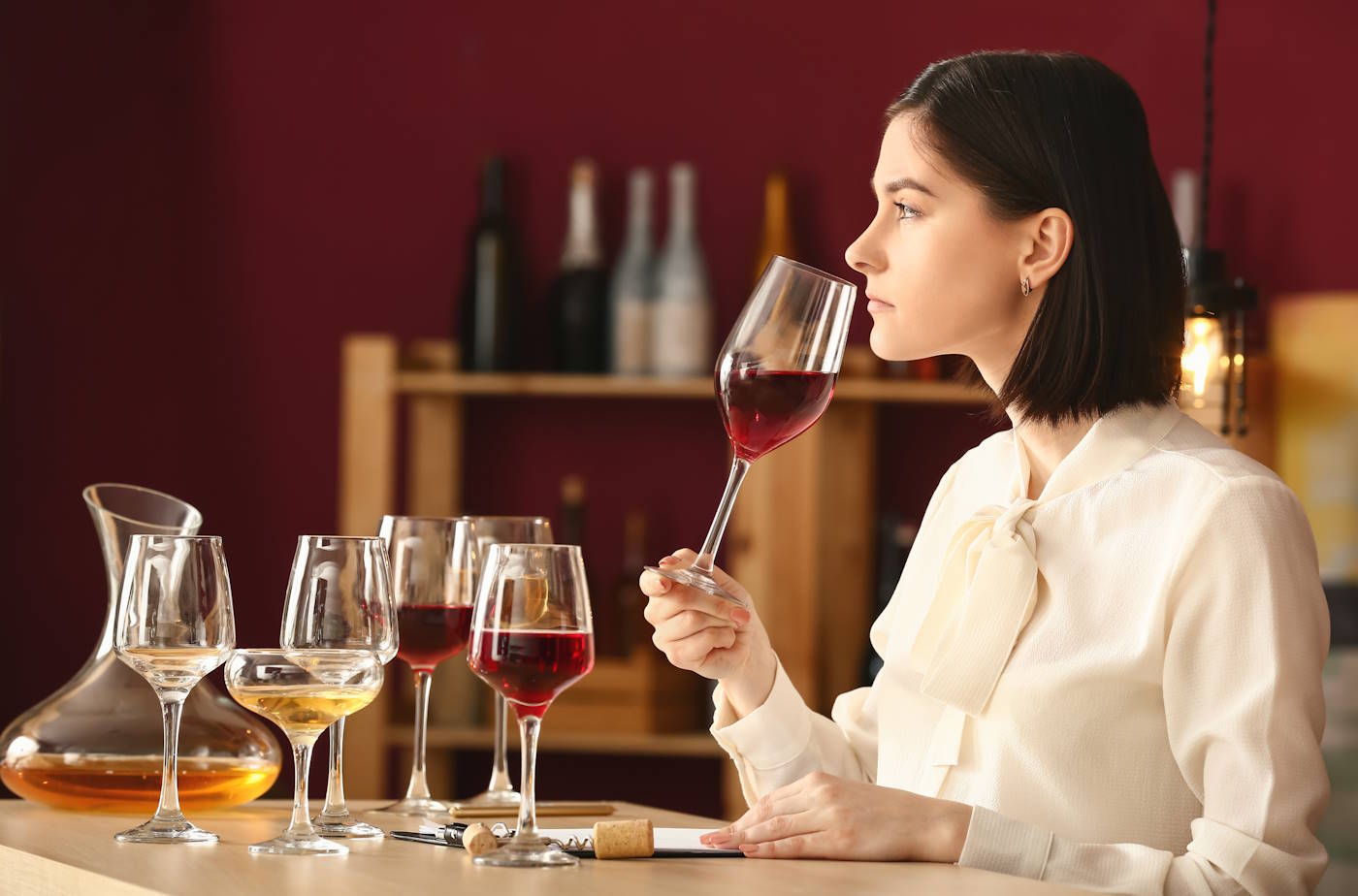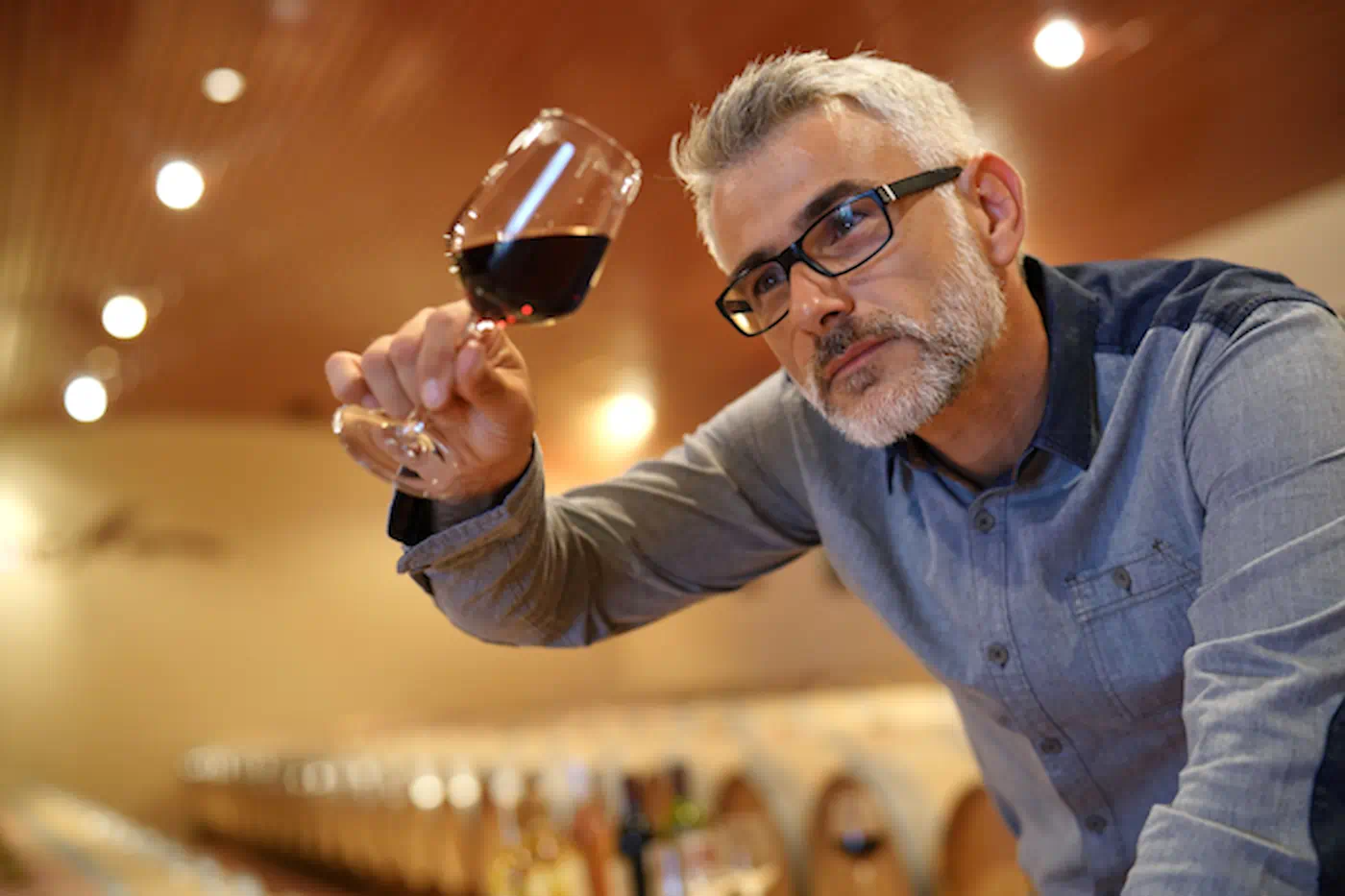The Pouring Parlor Wine, Spirits & Event Blog

How to Taste Wine
Wine-tasting is an art. It's a sensory journey that goes beyond simply drinking. It's about exploring, understanding, and appreciating the nuances of wine as well as identifying the wines you like. In this guide, we'll delve into the world of wine and more specifically, how to taste wine. We'll provide practical tips and insights to enhance your experience. You'll learn how to identify wine notes and flavors. You'll understand how to taste wine effectively.
Whether you're a seasoned wine enthusiast or a beginner, this guide is for you. We aim to equip you with the knowledge to master the art of wine-tasting. So, let's embark on this exciting journey together.

Preparing for Your Wine-Tasting Journey
Before you start tasting, there are a few things to consider. Proper preparation can significantly enhance your experience. Choosing the right glassware, dressing appropriately, and creating a conducive environment are all crucial. These elements can influence your perception of the wine. They can also affect your ability to identify wine notes and flavors. Let's delve into each of these aspects in more detail.

Choosing the Right Glassware
The glassware you use can impact your experience. Different types of wine require different types of glasses. For instance, red wines are best served in larger, rounder glasses. This allows the wine to breathe and the flavors to develop. White wines, on the other hand, are best served in smaller, narrower glasses. This helps to preserve the wine's temperature and aroma. Choosing the right glassware can enhance the wine's flavors and your overall tasting experience.
Dressing for the Occasion
What you wear can also affect your experience. Avoid wearing strong perfumes or colognes. These can interfere with your sense of smell, making it harder to identify wine notes. Also, consider wearing dark colors. Wine spills can happen, and dark colors can help hide any potential stains. Dressing appropriately can help you focus on the process without any distractions.
Creating a Conducive Tasting Environment
The environment in which you taste wine can influence your perception of it. If you're tasting at home, a quiet, well-lit space is ideal for . This allows you to focus on the wine's appearance, aroma, and taste without distractions. You also want to make sure the room temperature is comfortable. Extreme temperatures can affect the wine's temperature and, consequently, its taste.
Creating a conducive environment will enhance your ability to assess and appreciate the wine.
The Wine-Tasting Process: A Step-by-Step Guide
Wine-tasting is a sensory experience that involves sight, smell, and taste. It's a systematic process that can be broken down into five steps, often called the five S's of tasting wine. They are sight (look), swirl, sniff, sip, and savor. Each step is important in understanding the wine's characteristics and quality.

Step 1: Look - Assessing Wine Appearance
The first step is to look at the wine. Pour a small amount of wine into your glass and hold it against a white background. This allows you to assess the wine's color and clarity. The color can give you clues about the wine's age and grape variety. Colors can range from a pale yellow, almost hay color for white wines, to red wines that are deep burgundy.
Step 2: Swirl - Releasing the Aromas
Next, gently swirl the wine in your glass. This helps to aerate the wine and release its aromas. Be careful not to over-swirl as this can cause the wine to lose its character.
A tip for swirling your wine is to keep the glass on the table and swirl with the stem touching the table.
Step 3: Sniff - Identifying Wine Notes
After swirling, take a moment to sniff the wine. Your sense of smell plays a significant role in identifying wine notes. Try to identify the different aromas. These can range from fruits and flowers to spices and herbs. If you can't identify the smells, you might want to swirl again. But this time, put your hand over the top of the glass to keep the smell in the glass while you are swirling. Then, lift your hand right when you get the glass to your nose.
Step 4: Sip - Exploring Wine Flavors
Now, take a small sip of the wine with your head held level. Different portions of your tongue identify different tastes. Let it roll over your tongue before swallowing. This allows you to explore the wine's flavors and identify the primary tastes: sweet, sour, salty, bitter, and umami (savory).
Step 5: Savor - Understanding the Finish
Finally, savor the wine. After swallowing, pay attention to the aftertaste, also known as the finish.
The finish can give you insights into the wine's balance, complexity, and quality.
Developing Your Palate
Developing your palate is a big part of mastering wine-tasting. It involves training your taste buds to identify different flavors and textures. This process takes time and practice, but it's an enjoyable journey of discovery. With each wine you taste, you'll become more adept at recognizing subtle nuances and complexities.
Recognizing the Five Primary Flavors
Wine can exhibit five primary flavors: sweet, sour, salty, bitter, and umami. Sweetness is often associated with the presence of residual sugar in the wine. Sourness, or acidity, gives a wine its crispness and freshness. Bitterness can result from tannins, especially in red wines. Salty and umami flavors are less common but can be found in certain wines.
Identifying Balance and Complexity
Balance in wine refers to the harmony between its key components: sweetness, acidity, tannins, and alcohol. A well-balanced wine doesn't have any one component overpowering the others. Complexity, on the other hand, refers to the depth and variety of flavors and aromas in the wine. A complex wine will reveal multiple layers of flavors as you taste it.
The Role of Texture and Mouthfeel
Texture and mouthfeel play a significant role in the experience. They refer to the physical sensations you feel in your mouth when you taste wine. This can include the wine's body (light, medium, or full), the level of tannins (soft or grippy), and the sensation of alcohol (smooth or hot).
Wine-Tasting Etiquette and Techniques
Wine-tasting is not just about sipping wine. It's a process that involves certain etiquette and techniques. These practices help you to fully appreciate the wine and enhance your tasting experience.
Let's delve into some of these key aspects.
To Spit or Not to Spit
Spitting wine during a tasting might seem odd. However, it's a common practice, especially during professional tastings or when tasting multiple wines.
Spitting allows you to taste the wine without consuming too much alcohol.
Cleansing Your Palate
Cleansing your palate between different wines is important. It helps neutralize and prepare your taste buds for the next wine.
Common palate cleansers include plain water, bread, and unsalted crackers.
Taking Effective Wine Notes
Taking notes during can enhance your experience. It helps you remember the wines you've tasted and your impressions of them. Your notes can include details about the wine's appearance, aroma, taste, and your overall impression.
Enhancing Your Wine-Tasting Experience
Wine-tasting is a journey of discovery. It's about exploring different wines and understanding their unique characteristics. There are several ways to enhance your experience.
Let's explore some of them.
by Marcus Ganahl (https://unsplash.com/@marcusganahl)
The Impact of Age, Terroir, and Winemaking Techniques
The age of the wine, the terroir (area, soil, topography, and climate), and the winemaking techniques all impact the taste of the wine. Understanding these factors can help you appreciate the wine more. For instance, older wines often have more complex flavors compared to younger ones.
Pairing Food with Wine
Pairing food with wine can greatly enhance your tasting experience. You may taste a wine without food and not like it. But pair it with the right food and it becomes a totally different wine experience. The right food can complement the wine's flavors and create a harmonious taste. For example, a rich red wine might pair well with a hearty steak.
Attending Guided Wine-Tastings
Attending guided wine-tastings can be a great way to learn more about wine. These events are often led by experts who can provide insights into the wines being tasted. It's also a great opportunity to have fun, ask questions, and learn from others.
Advanced Wine-Tasting Topics
As you delve deeper into wine-tasting, you'll learn more about the complexities of wine. These can enhance your understanding and appreciation of wine. They can also help you make more informed choices when selecting wines.
Let's explore some of these advanced topics.
Decoding Wine Labels and Vintage Information
Wine labels can be a treasure trove of information. They can tell you about the wine's origin, grape variety, and vintage. Understanding how to decode this information can enhance your wine-tasting experience.
Recognizing Common Wine Faults
Not all wines are created equal. Some may have faults that can affect their taste and quality. Learning to recognize common wine faults can help you identify wines that may not be up to par.
Exploring the Influence of Oak Aging
Oak aging can greatly influence a wine's flavor and aroma. Wines aged in oak often have notes of vanilla, spice, and toast.
Understanding the influence of oak aging can help you appreciate these nuances in your wine-tasting journey.
Organizing and Sharing Your Wine Tasting Adventures
Wine-tasting is not just a solitary pursuit. It can also be a social activity that brings people together. Sharing your wine-tasting adventures can enhance your enjoyment and understanding of wine. Let's look at some ways to organize and share your wine-tasting experiences.
How to Organize a Wine-Tasting Event
Organizing a wine-tasting event can be a fun and rewarding experience. You can choose a theme, such as wines from a specific region or grape variety.
Remember to provide palate cleansers and ensure a comfortable, distraction-free environment for your guests.
Joining a Wine Club or Community
Joining a wine club or community can provide opportunities to taste a variety of wines. You can also learn from others and share your own experiences. Look for local wine clubs or online communities that align with your interests.
Using Technology and Apps
Technology can enhance your wine-tasting adventures. There are apps that can help you track your tastings, identify wines, and even pair wines with food. A good app to start with is Vintg: Wine-Tasting Tracker. It's easy to use and provides a personal wine-tasting journal.
These tools can make your wine-tasting experiences more organized and enjoyable.
Conclusion: Embracing the Wine Tasting Culture
Mastering the art of wine-tasting is a journey, not a destination. It's about embracing the culture, learning continuously, and, most importantly, enjoying the experience. Remember, wine-tasting is subjective and personal. So, trust your palate, explore different wines, and celebrate the diversity and complexity that the world of wine offers.
Would you like to learn more about how to taste wine? Join us in our wine classes.



